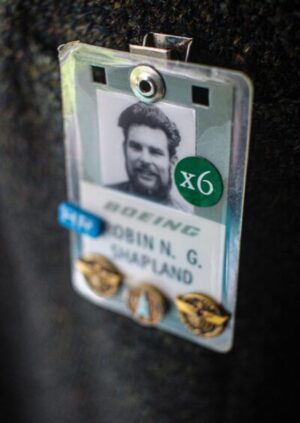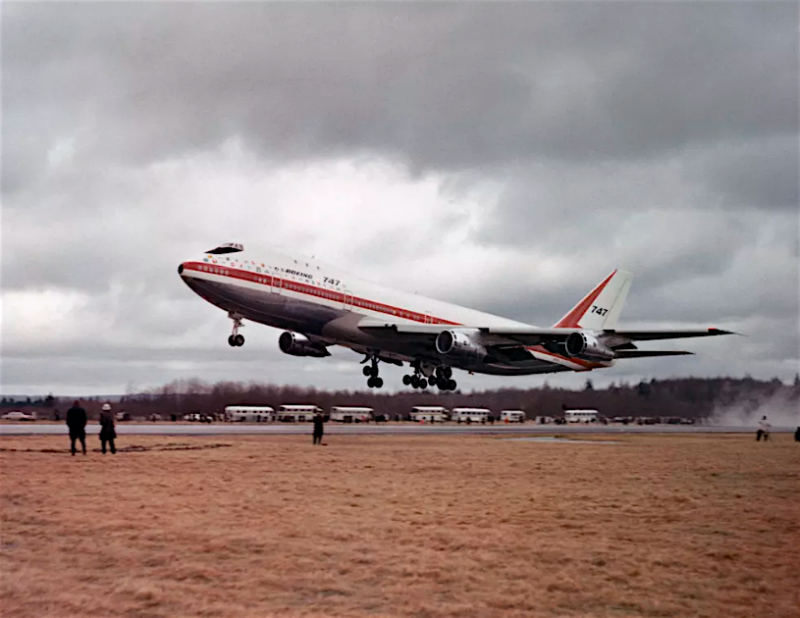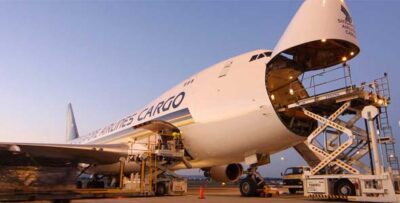Letters from the Pandemic 32: Hidden in Plane Sight
Letters from the Pandemic 32: Hidden in Plane Sight
by Keith Shapland
*

In 1969 when I was seven, Robin Shapland, my father, a Boeing engineer, hid me in the trunk of our 1967 Impala so that he could sneak me past security at the gate and onto Boeing Field in Seattle so that we could sit together on the hood of the car and watch the first 747 come into land. When he retired, he was the liaison to Northrop Grumman responsible for the quality and timely arrival of the main body sections of the 747 to the production line in Everett, Washington. My father passed away several years ago, and although through much of the year he comes to mind less frequently, this changes in the springtime as the daylight lengthens and I am outside later to hear a British Airways 747 rumble over my house on Bowen Island — the sound of the engines so familiar that I would not even need to look up. It felt like the BA 747 flight over my house was my own personal reminder of my father.
From that first time I saw it as a seven year old, the 747 has been for me an unequivocal symbol of our ability to do truly amazing things. It is an ambitious idea and an audacious endeavour, to design and build something so immense with the expectation that it would fly. It is a representation of our mastery of the physical world and it states unequivocally that we are in charge of our own fates and are limited merely by the scale of our imaginations.

The arrival of COVID initially had our family in a state of denial (COVID will not affected us) followed quickly by a week of frantic activity as we struggled to get our daughter home from university in Denmark as borders closed and flights were cancelled. Once she and our son were home studying and working online, we all slowed down into a seemingly never-ending drone of isolation and tightly-packed confinement. We learned to work and exist in our suddenly tiny feeling home, with the larger ramifications of COVID at a distance.
For me, the deeper effects of the Pandemic finally arrived in mid-July 2020 while reading the news at lunchtime. “It is with great sadness that we can confirm we are proposing to retire our entire 747 fleet with immediate effect,” a BA spokesman told the BBC. “It is unlikely our magnificent ‘queen of the skies’ will ever operate commercial services for British Airways again due to the downturn in travel caused by the global pandemic,” the spokesman added.

While it is not the death or debilitation of a loved one, it is like the dimming of a light I had naively assumed would always be there, just over my head every evening as it rumbled off towards England, where I was born. The arrival of COVID has taken us by surprise and is a sobering reminder that we are part of, and most certainly not above, the cycles of the natural world. These two world views, one represented by a massive machine and the other by a microscopic virus, stand in stark contrast to each other. The 747 is a representation of our mastery of the natural world, an invitation to travel, to go to places we have never been or to be reunited with loved ones. It is a personification of hope, of a world in which we are in charge of our own destinies. COVID represents a world where we are at the mercy of the natural world. It has narrowed our horizons, imprisoning and isolating us in our houses, making us fear other people as potential threats.

Thankfully, the 747’s story does not quite end there. For the self-reflective person, this Pandemic has revealed character traits that have been somewhat hidden away but are fundamental to who we are. The pandemic too has revealed something of a secret hidden in plain sight in the design of the 747. Its raised cockpit and upper deck (aka the hump) are configured in just this way because the plane was also designed to have a cargo configuration in which the entire nose opens up to reveal its main cargo deck. During its concept development Boeing was not entirely convinced that we would want to travel quite so much and so the plane has this built in back-up plan. So, while the travelling public became familiar with the passenger version of the 747, the cargo variant has also been working in a less public way for the last fifty years. Form follows function and as the pandemic has pushed most of the remaining iconic passenger 747 into early retirement, it has brought the cargo 747 to the forefront.
The world wide effort to use vaccines to protect populations and put an end to the pandemic is going to be one off the biggest logistical challenges we have faced, shipping hundreds of millions of doses around the world, and the 747 with its enormous capacity will undoubtedly play a significant role in this effort. The 747 freighter fleet will be gainfully employed for decades to come.
For the past fifty years the iconic passenger carrying 747 has circled the globe allowing us to experience a freedom few before its arrival could have even imagined. While that type of freedom feels like a dream or a hazy memory now, it has again given us hope. Hope for a relief from the virus as the Queen of the Skies shifts to transporting vaccines throughout the world. I am heartened to know that my father’s 747 legacy is still working at drawing us closer to a somewhat less lonely world and if I do hear those four engines again, at some odd hour, I will be sure to look up and smile.
*

Keith Shapland is a Master’s student in the Graduate Liberal Studies program at Simon Fraser University. He is an Industrial Designer who has specialized in the development of mock-ups and prototypes for a range of consumer, industrial, medical and transportation projects. Robin, his father, contributed to the design of the original 747 and Keith was lucky enough to work on the last production version, the 747-8. Keith is now happily focusing on teaching at Emily Carr University of Art and Design and is naively optimistic that he can keep up with the mounting maintenance projects around his house.
*
References:
“British Airways retires entire 747 fleet after travel downturn” (17 July 2020). Source: BBC Business News
“Covid vaccine: 8,000 jumbo jets needed to deliver doses globally, says IATA” (10 September 2020). Source: BBC Business News
*
The Ormsby Review. More Books. More Reviews. More Often.
Publisher and Editor: Richard Mackie
The Ormsby Review is a journal service for in-depth coverage of B.C. books and authors. The Advisory Board consists of Jean Barman, Wade Davis, Robin Fisher, Cole Harris, Hugh Johnston, Patricia Roy, David Stouck, Maria Tippett, and Graeme Wynn. Scholarly Patron: SFU Graduate Liberal Studies. Honorary Patron: Yosef Wosk. Provincial Government Patron since September 2018: Creative BC
“Only connect.” – E.M. Forster
3 comments on “Letters from the Pandemic 32: Hidden in Plane Sight”
Terrific letter, Keith. Great to hear from you.
Jordan
Hi Keith
Thanks for sharing a wonderful childhood memory.
Best Wishes,
Tom Morton
2017 GLS Cohort
Thank you Tom, I am ever so glad you liked it. I realize now how much I miss our in-person classes and especially the meal beforehand. Let’s hope we can get back to that world in the Fall.
Thanks again,
Keith